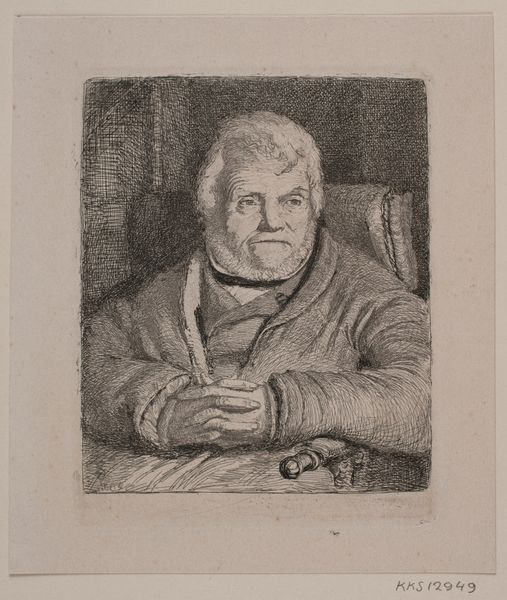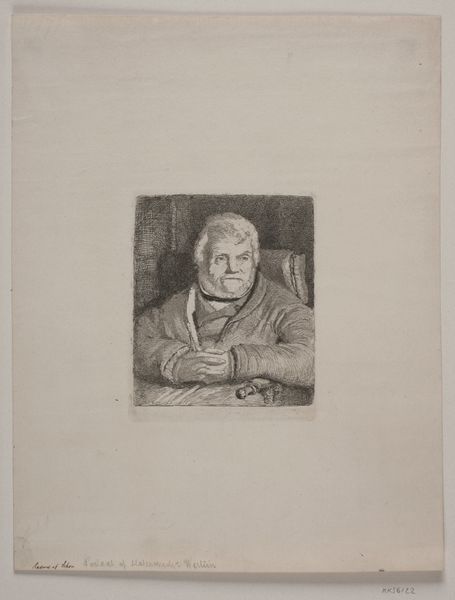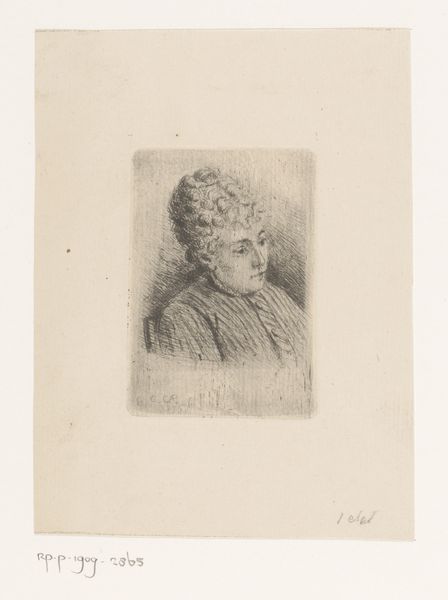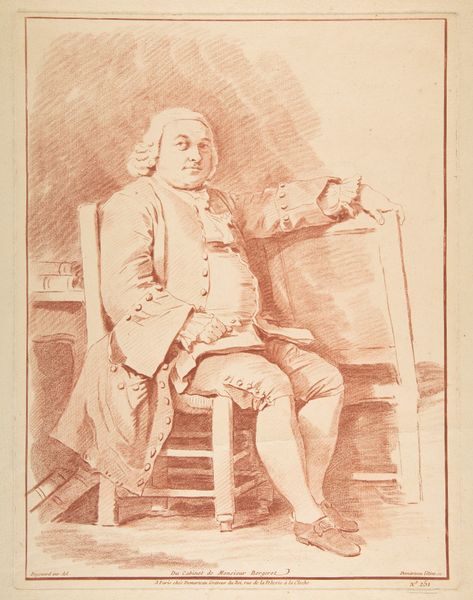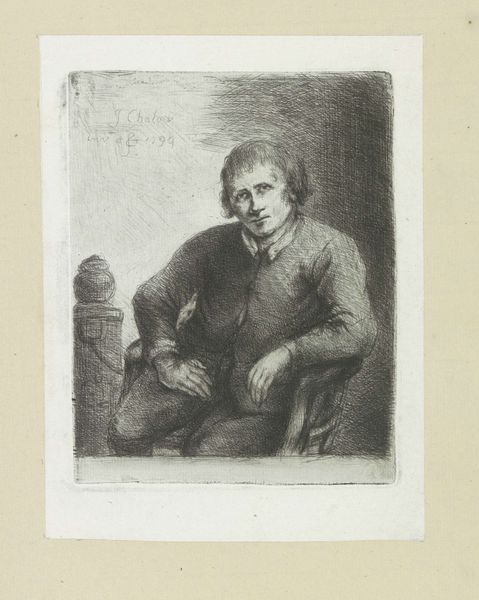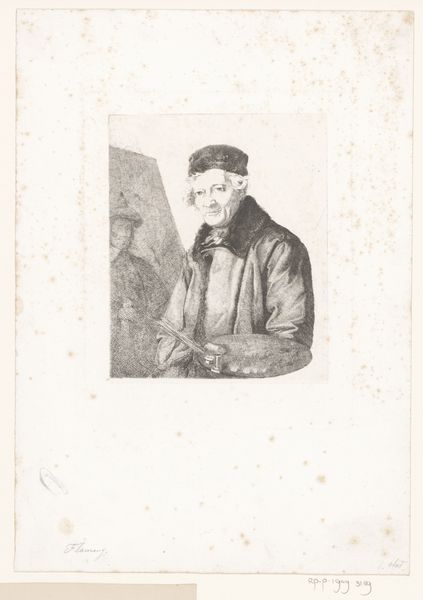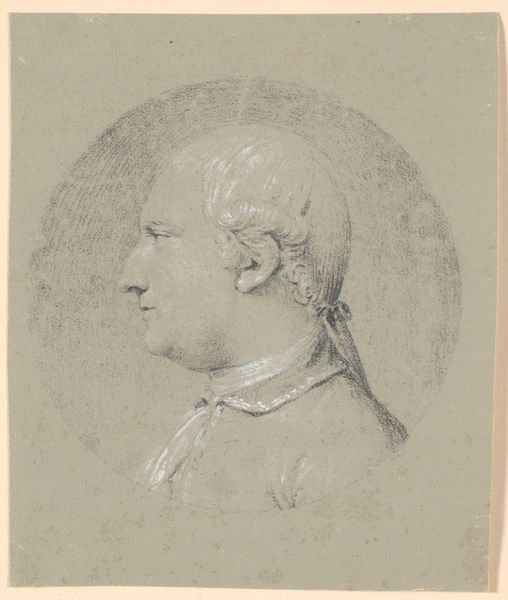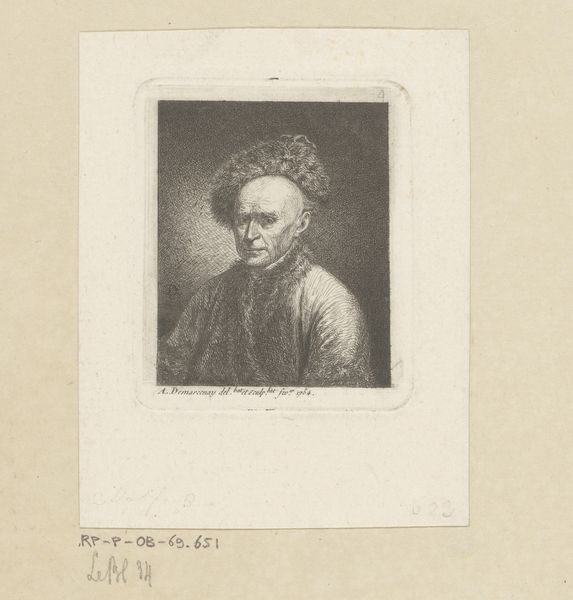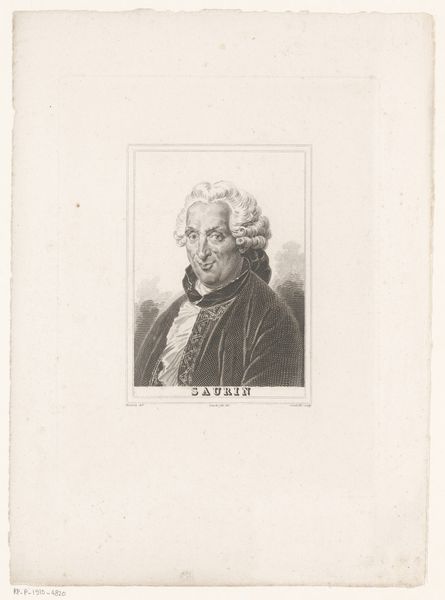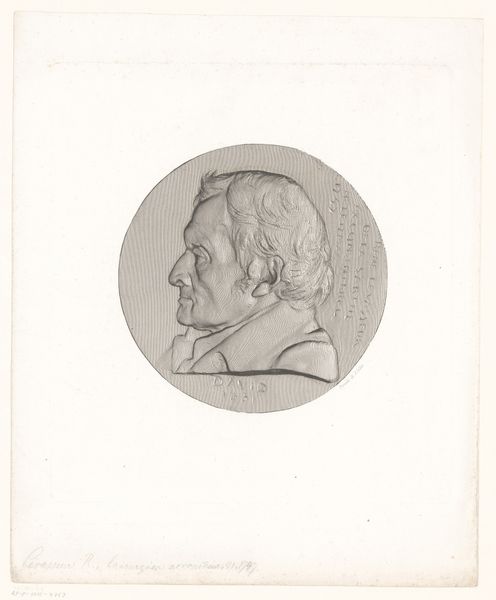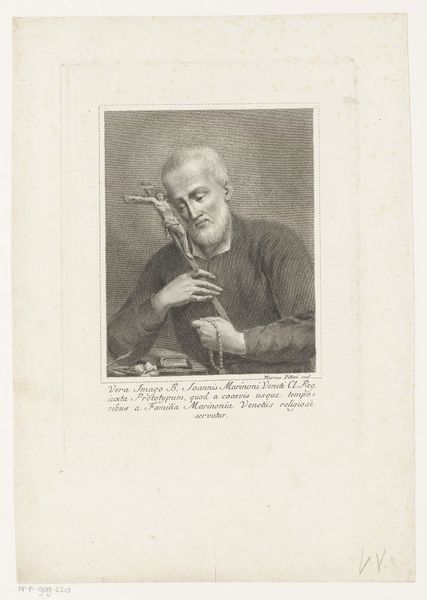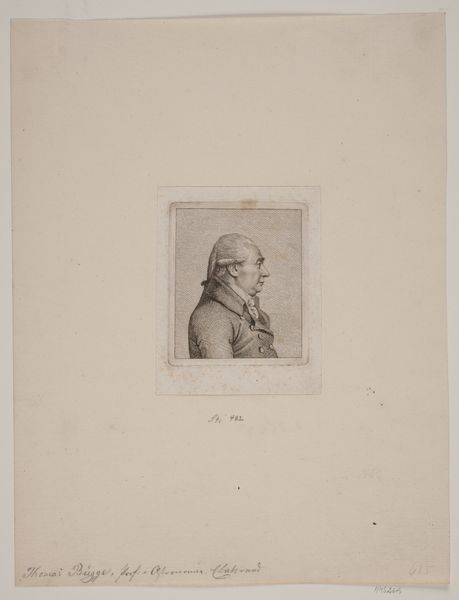
print, etching
#
portrait
# print
#
etching
#
pencil drawing
#
realism
Dimensions: 130 mm (height) x 105 mm (width) (plademaal)
Curator: This is "Malermester Werliin," an 1864 etching by L.A. Schou, currently housed in the Statens Museum for Kunst. It is a strikingly intimate portrait. Editor: My first impression is one of quietude. The limited grayscale and the subject's introspective gaze create a very contemplative atmosphere. Almost like a captured moment of internal reflection. Curator: Indeed. The technique here, the etching process, is crucial to understanding that feeling. Look closely at how Schou used a network of fine lines to define Werliin’s features, clothing, and the backdrop. It allows for incredibly subtle gradations of light and shadow. Editor: And consider what it might mean to immortalize a tradesman in this manner. Was this a commission, or a project of artistic interest from Schou? Either way, depicting working-class individuals contributed to a burgeoning sense of democratic possibility at that time. It shifts the traditional focus away from the nobility, engaging directly with other, previously unseen segments of the Danish populace. Curator: Precisely. The rise of Realism as an artistic movement coincided with significant social changes across Europe. The subject is identified by his trade, "Malermester", or master painter. Note the unassuming pose, seated comfortably but formally dressed and the hint of tools or implements near his hand suggesting honest work and self-reliance, values esteemed by the growing middle class. Editor: Absolutely. We often perceive older portraits as stoic due to their formal nature. But I see in Werliin’s eyes not just self-possession but vulnerability. What kind of social discourse could the sitter find himself amidst while sitting to have his image struck like this? It would be hard to dismiss any level of anxiety felt in the late industrial revolution when artistic roles of depiction and creation started becoming more nebulous. Curator: And this print would have allowed the portrait to be widely circulated, making Werliin a visible figure, known to a broad segment of society. The politics of image dissemination played a large role in identity and influence at the time, certainly raising his stature within his community. Editor: In a modern context, what does it signify to observe such an intimate moment immortalized from that sociopolitical paradigm? It encourages questioning around who deserves representation. Does our society have an ethical imperative to actively highlight diverse figures who historically haven't received that level of visual regard? Curator: It also brings up questions of labor. A painter, but also, what did painting signify in the lives of those who toiled with materials? Was the choice to title this painting, “Master Painter”, about prestige, ownership or something else entirely? Editor: Considering Schou’s position and societal privilege, there exists potential for this work to be both revolutionary and somewhat limited. It’s our obligation as we reflect to ponder on the agency and complex identity construction of his subject. Curator: Thinking through that perspective, what appears simple in the first observation of the art’s subject shifts into profound consideration of representation. Thank you. Editor: Likewise.
Comments
No comments
Be the first to comment and join the conversation on the ultimate creative platform.
